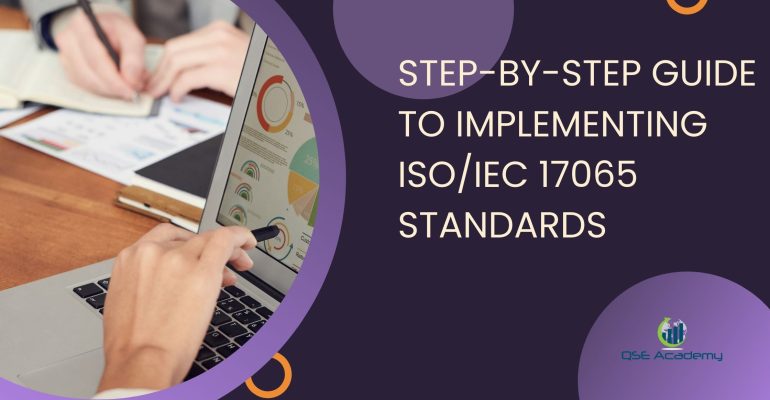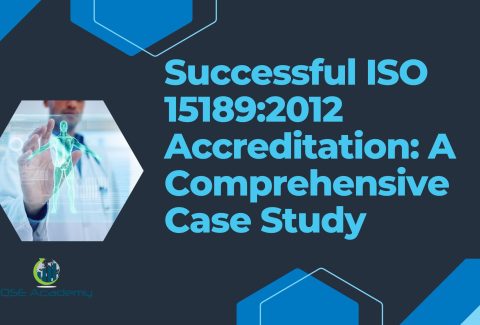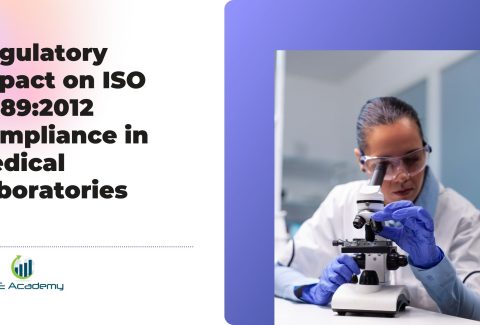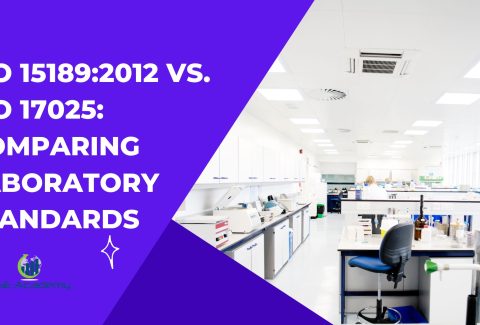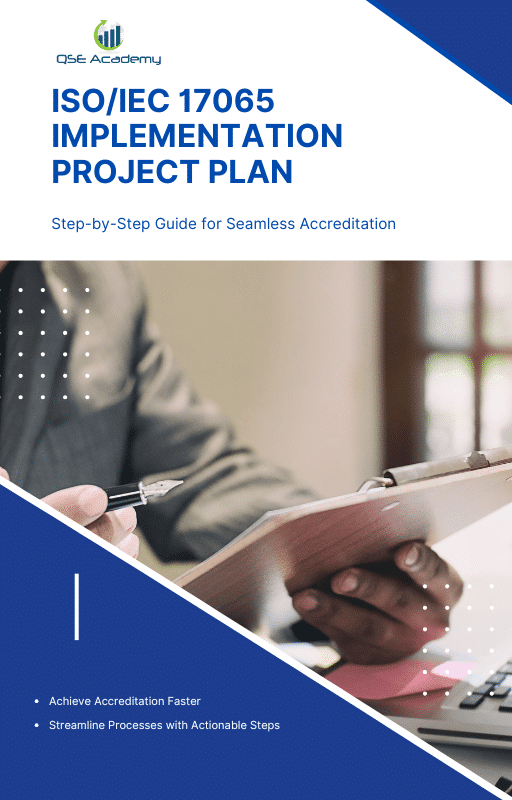Step-by-Step Guide to Implementing ISO/IEC 17065 Standards
Navigating the waters of international standards can be a daunting task for any organization. ISO/IEC 17065 sets the criterion for bodies certifying products, processes, and services. Our guide is your atlas to a successful voyage through the implementation of these revered standards. Introducing the systems and processes detailed in ISO/IEC 17065 can seem overwhelming, but the benefits of increased credibility and customer trust are a beacon for businesses globally. Within this guide, we will illuminate each step, from grasping the fundamentals to overcoming the challenges, equipping you to enhance your certification body’s reputation and operational efficiency.
Introdução
ISO/IEC 17065 is an international standard that provides requirements for bodies that perform certification of products, processes, and services. It ensures that these certification bodies operate in a competent, consistent, and impartial manner, thereby facilitating the fair trade of products and increasing consumer trust. The standard is quintessential for organizations that aim to demonstrate the quality and safety of their products to both international and domestic markets.
The role of ISO/IEC 17065 is pivotal in the product certification landscape as it lays down a clear framework for a robust certification process. It establishes the principles of independence and transparency among certification bodies and mandates regular internal audits and management reviews to maintain the integrity of the certification activities.
Tracing its history, ISO/IEC 17065 was originally published to fortify the confidence in certification bodies and to align with other conformity assessment standards such as ISO/IEC 17021, ISO/IEC 17025, and ISO/IEC Guide 65. Over the years, it has evolved to better suit the complexities of modern certification and regulatory requirements, promoting consistency among certification bodies worldwide.
Nota: Consider including a table with key information regarding ISO/IEC 17065, such as publication date, latest revision, related standards, and scope of application.
Compreender a norma ISO/IEC 17065
ISO/IEC 17065 sets international standards for organizations that perform the certification of products. Its primary purpose is to ensure product quality and safety by establishing uniform benchmarks for the certification process. As a result, companies meeting ISO/IEC 17065 standards can enhance consumer trust and market confidence globally. The objectives also lean towards promoting consistency and reliability among bodies that certify products, ensuring that all operate under a common set of rules and procedures.
The applicability of ISO/IEC 17065 extends across various industries, encompassing a wide range of product types that require certification. Unlike other ISO standards, such as ISO/IEC 17025, which focuses on testing and calibration laboratories, or ISO/IEC 17021, which concerns management system certification bodies, ISO/IEC 17065 is dedicated to product certification bodies.
Key stakeholders in ISO/IEC 17065 include certification bodies, Accreditation Bodies, regulatory authorities, scheme owners, and organizations seeking product certification. Each plays a distinct role within the system—Accreditation Bodies evaluate certification bodies, regulatory authorities oversee the enforcement of standards, scheme owners develop the certification schemes, and companies apply for certification to demonstrate product conformity.
Preparation for Implementation
Realização de uma análise de lacunas
In preparation for implementing ISO/IEC 17065 standards, conducting a comprehensive gap analysis is crucial. This critical first step involves assessing the current processes and systems of the certification body against the international standards set forth by ISO/IEC 17065. Through a meticulous examination of existing practices, certification bodies can identify areas that require improvement or enhancement to meet the requirements. Following the analysis, documenting the findings is essential, and developing an action plan to address any shortcomings ensures a systematic approach to compliance.
Establishing Commitment and Leadership
Securing unwavering support from top management is paramount for the successful implementation of ISO/IEC 17065 standards. Leadership must not only be committed but also clearly define roles and responsibilities throughout the organization. Furthermore, they must effectively communicate the importance of adhering to the standards across all levels of the company, fostering an environment that values continuous improvement and compliance to accreditation requirements.
Atribuição de recursos
The allocation of adequate resources is vital to support the implementation process. A well-planned budget must consider all associated costs, including training, technology, infrastructure, and any external resources required. Ensuring that both internal resources and the necessary technology are available and of the requisite standard is fundamental to the infrastructure of a certification body striving to meet ISO/IEC 17065 standards.
Developing the Certification Body’s Framework
Estrutura organizacional
Implementing ISO/IEC 17065 standards requires an organizational structure designed to uphold the integrity and impartiality of certification activities. Start by defining clear roles and responsibilities within your organization. This includes establishing committees responsible for managing conflicts of interest and ensuring impartiality in certification decisions. It’s essential that the structure supports all certification activities outlined in the ISO standard and maintains compliance with regulatory authorities and accreditation requirements.
Documentation Requirements
Robust documentation is the backbone of a certification body’s structure. Develop comprehensive policies, procedures, and work instruction documents that outline every aspect of the certification process and scheme requirements. Maintain strict version control and implement regular document review processes to ensure that all documents are up-to-date and meet the ISO/IEC 17065 standards. This will aid in management reviews, internal audits, and accreditation assessments.
Competência e Treinamento
A certification body must have a competent team capable of conducting certification of products efficiently. Develop a structured training program to provide internal resources with the necessary skills and knowledge. Assess their competence on a regular basis and require corrective actions and preventive actions when deficiencies are identified. Ensuring ongoing competence is crucial for complying with ISO/IEC 17065 and making reliable certification decisions.
- Organizational Structure: Defines roles for maintaining impartiality.
- Documentation Requirements: Ensures document compliance with standards.
- Competence and Training: Enhances team skills for reliable certification.
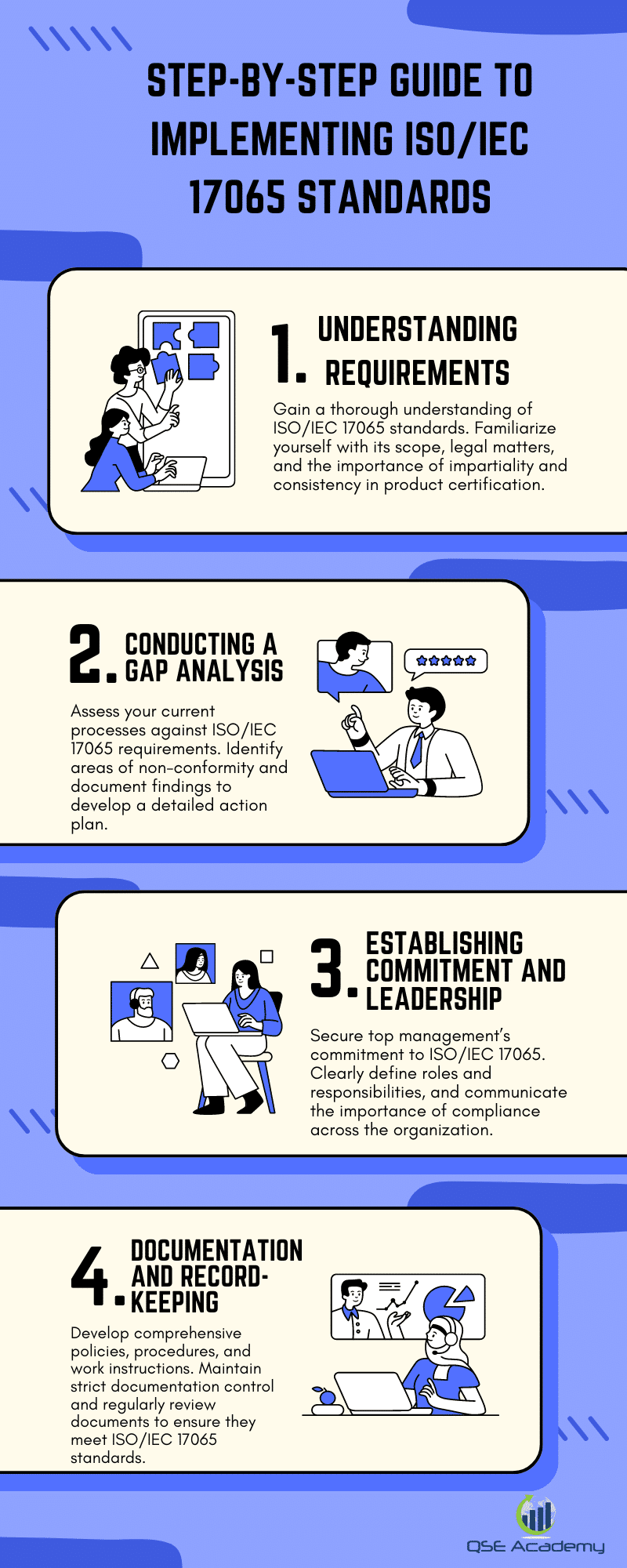
Implementation of ISO/IEC 17065 Processes
ISO/IEC 17065 establishes the requirements for bodies certifying products, processes, and services. Implementing the processes aligned with this standard ensures that a certification body operates competently and impartially, leading to internationally recognized and reliable certifications.
Processo de candidatura
To begin the application process, certification bodies must design procedures that clarify the steps for potential clients. This includes initial engagement, where parties discuss the scope of certification, and an extensive application review to ensure all necessary data is presented and meets the minimum requirements for the certification scheme.
Processo de avaliação
The evaluation process requires planned and systematic product evaluations according to documented procedures and criteria. This ensures that certification outcomes are based on objective evidence and that they are consistent across similar products and services.
Processo de tomada de decisão
Certification bodies must establish clear criteria and procedures for decision-making. Impartiality and consistency are critical, implying that no conflict of interest should influence the decisions. The entire decision-making process should be well-documented and transparent.
Vigilância e recertificação
Ongoing compliance is monitored through surveillance programs, designed to ensure that certified products or services continue to meet the scheme requirements. Additionally, certification bodies conduct recertification audits to review and renew certifications at appropriate intervals.
Implementing these ISO/IEC 17065 processes requires thorough planning, a commitment to impartiality, and continuous improvement through both preventive and corrective actions.
Requisitos do sistema de gestão
Implementing ISO/IEC 17065 involves establishing a management system that meets international standards for certifying products, processes, and services. Section 5 of ISO/IEC 17065 outlines the requirements for such a management system.
Auditoria Internas:
To adhere to ISO/IEC 17065, a certification body must plan and conduct internal audits systematically. These audits assess whether the certification activities comply with both the international standards and the body’s own procedures. The aim is to identify areas of non-conformity. When non-conformities are discovered, it is crucial for the certification body to take corrective actions promptly to resolve any issues and to prevent recurrence through suitable preventive actions.
Revisão da Gestãos:
Regular management reviews are integral to maintaining a management system under ISO/IEC 17065. These reviews evaluate the effectiveness and suitability of the management system, ensuring its ability to fulfill both the certification scheme requirements and regulatory authorities’ expectations. Findings from management reviews are used to make informed decisions and foster continuous improvement within the certification body. This helps in maintaining accreditation requirements and enhancing overall performance.
A table or list is not pertinent in this specific context, given the brief nature of the content and the emphasis on facts and guidelines surrounding internal audits and management reviews.
Handling Challenges and Ensuring Continuous Improvement
Managing impartiality and conflicts of interest is crucial to upholding the integrity of the ISO/IEC 17065 standards. Certification bodies must have strategies to maintain impartiality, rigorously assessing their operations and relationships to preemptively tackle potential biases. Conflicts of interest, when they arise, require transparent handling and a structured resolution process to maintain stakeholder trust.
Addressing non-conformities is another critical area. These discrepancies, when identified, can significantly impair the certification process if uncorrected. A comprehensive understanding of common non-conformities empowers a certification body to develop effective corrective actions. Implementing these actions involves not just immediate rectification but also tracking their long-term effectiveness to prevent recurrence.
Lastly, continuous improvement positions a certification body at the forefront of quality and reliability. Tools and techniques like internal audits, management reviews, and preventive actions drive this forward. Meticulous monitoring of performance and the effectiveness of implemented changes ensures that the organization does not stagnate but evolves to meet the ever-changing demands of the industry and scheme requirements.
By consistently managing these challenges, a certification body can assure the credibility of its certification activities and sustain the confidence of regulatory authorities, scheme owners, and consumers in its certification marks.
Estudos de casos e aplicações no mundo real
Case Study 1: Implementation in a Manufacturing Certification Body
The process of implementing ISO/IEC 17065 within a manufacturing certification body involved a strategic integration of the international standard into existing quality systems. Key challenges included aligning internal processes with the rigorous requirements of the standard, ensuring objective certification decisions, and addressing the scarcity of internal resources familiar with ISO/IEC 17065. Solutions comprised targeted internal training, adoption of external resources, and a comprehensive review of certification schemes. These contributed to enhanced credibility of the certification process, leading to greater market trust and an expanded client base.
Case Study 2: Implementation in a Service-Based Certification Body
A service-based certification body embarked on the implementation of ISO/IEC 17065, adapting the standard’s principles to its intangible offerings. The main hurdles encountered were the interpretation of standard’s clauses for a non-product specific context, and the maintaining impartiality within the certification activities. Implementing robust internal audits and management reviews as preventive and corrective actions were critical in overcoming these roadblocks. The tangible results were seen in increased recognition by regulatory authorities, improved service quality, and securing accreditation, thereby fortifying the organization’s position in the competitive market for conformity assessment activities.
Conclusão
Implementing ISO/IEC 17065 standards is an essential process for certification bodies dedicated to the certification of products. Adhering to these international standards is not just a marker of credibility but a necessity for those who want to ensure the highest quality in their certification activities. The importance of such adherence cannot be overstated; it instills confidence among consumers, scheme owners, and regulatory authorities.
The step-by-step implementation encompasses:
- Understanding the ISO/IEC 17065 requirements.
- Application for certification with an Accreditation Body.
- Preparation of necessary documentation and procedures.
- Conducting thorough Internal audits and management reviews.
- Implementing corrective and preventive actions.
- Collaborating with the Accreditation Body for the accreditation process.
Certification bodies must align closely with standards like ISO/IEC 17025, ISO/IEC 17021, and ISO/IEC 17020, which complement the certification process and management system. Moving forward, the trend is likely to tilt towards greater transparency, accountability, and integration of advanced technologies in the certification process.
Ultimately, the successful implementation and maintenance of the ISO/IEC 17065 standard lead to the use of certification marks as symbols of trust and compliance with scheme requirements, ensuring the entity remains at the forefront of conformity assessment activities.
Referências
Organização Internacional de Normalização (ISO):
- ISO/IEC 17065:2012 – Requirements for bodies certifying products, processes, and services
Additional ISO References:
- ISO/IEC 17000: Conformity assessment – Vocabulary and general principles
- ISO/IEC 17021: Requirements for bodies providing audit and certification of management systems
- ISO/IEC 17025: General requirements for the competence of testing and calibration laboratories
- Guia ISO/IEC 65: General requirements for bodies operating product certification systems
- ISO/IEC 17020: Requirements for the operation of various types of bodies performing inspection
Industry Standards and Guidelines:
- IAF (International Accreditation Forum) Guidance on the Application of ISO/IEC 17020
Related Regulatory Authorities and Accreditation Body protocols:
- Local or regional regulations that endorse or mandate the use of ISO/IEC 17065
- Accreditation Body guidelines for conformity assessment bodies
Industry Publications:
- Academic journals on conformity assessment and certification processes
- White papers by scheme owners and certification bodies on best practices for implementing ISO standards
For a more in-depth understanding and guidance on the application and interpretation of the ISO/IEC 17065 standard, certification bodies, industry experts, and scheme owners are encouraged to review the above authoritative sources. Additionally, regular updates from the International Organization for Standardization should be checked to keep abreast of any amendments or interpretative guidelines.
Apêndice
To effectively implement ISO/IEC 17065 standards, organizations seeking accreditation as a certification body must navigate various requirements that ensure competence and reliability in the certification of products. Resources and tools such as templates and checklists are invaluable for this process, as they provide a structured approach to compliance. Further support can also be achieved through links to relevant training and certification programs designed to deepen understanding of the standards.
Key Implementation Steps:
- Pedido de certificação:
- Submit the initial application to an Accreditation Body.
- Include necessary documentation reflecting internal resources and scheme compliance.
- Documentation Review:
- Prepare and organize documents according to ISO/IEC 17065 requirements.
- Use checklists to ensure all scheme requirements are addressed.
- Auditoria Internas e Revisão da Gestãos:
- Schedule regular internal audits to assess conformity assessment activities.
- Conduct management reviews to determine the effectiveness of the certification process.
- Corretivas e Acção Preventivas:
- Identify non-conformities and take corrective actions.
- Implement preventive actions to mitigate future risks.
- Processo de acreditaçãos:
- Undergo rigorous assessment by an Accreditation Body.
- Meet all accreditation requirements through demonstrated conformity.
- Melhoria contínua:
- Regularly update procedures and practices in line with the latest ISO/IEC standards and regulatory authorities’ stipulations.
Recursos adicionais:
- Training and certification programs.
- Templates and checklists for ISO/IEC 17065 implementation.
Subsequent Steps: (Post-Accreditation)
- Maintain compliance with the certification agreement.
- Regularly use certification marks as per guidelines.
- Engage in conformity assessment activities to uphold standards.
Certification bodies need to dedicate considerable effort and attention to detail to successfully implement the ISO/IEC 17065 standards, ensuring the reliability and validity of their certification activities.
Procurando por mais recursos sobre a ISO 17065?
Se este artigo foi útil para si, explore os nossos recursos premium concebidos para o ajudar a obter a certificação ISO 17025 de forma eficiente:
- 📦 Pacote de documentação completo para a norma ISO/IEC 17065 2012: Obtenha todos os modelos e documentos essenciais de que necessita para uma implementação rápida e fácil.
- 🎓 Curso online sobre a ISO/IEC 17065 2012 : Inscreva-se na nossa formação abrangente para dominar os conceitos-chave e os passos práticos para a certificação.
- 📋 Lista de verificação ISO/IEC 17065 2012: Descarregue a nossa lista de verificação pormenorizada para se certificar de que abrangeu todas as etapas do processo.
Estes recursos são adaptados para satisfazer as suas necessidades e garantir um percurso de certificação sem problemas. Explore-os hoje e fique um passo mais perto do sucesso!

